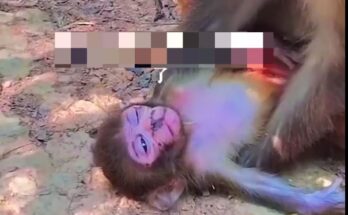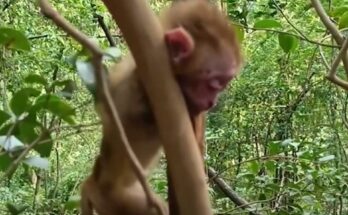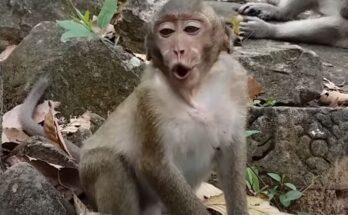The world of animals is both fascinating and complex, offering insight into behaviors that can seem puzzling, especially when they involve parental care. One particularly distressing phenomenon observed in primates is the mistreatment or neglect of infant monkeys by their mothers. This behavior, while seemingly unnatural, has underlying causes rooted in biology, environment, and social dynamics. Understanding why a mother monkey might mistreat her baby and what happens to the infant in these situations provides a window into the challenges and intricacies of primate life.
What Happens to the Baby Monkey?
When a mother monkey mistreats her baby, the consequences can range from mild neglect to outright harm. In milder cases, the mother may be inattentive, failing to provide adequate care such as grooming, nursing, or holding the infant. In more severe cases, the mother might aggressively handle the baby, injuring or even killing it. The fate of the infant depends largely on the extent of the mistreatment and the availability of support from the larger group or human intervention if the monkeys are in captivity.
Infant monkeys rely entirely on their mothers for survival during the first months of life. Without proper care, they face malnutrition, developmental delays, and social deficits. Babies who survive mistreatment often grow up with behavioral issues, such as difficulty integrating into the social structure of their group. In some cases, if the group is cohesive and other females are present, they might step in to care for or protect the infant. This “alloparenting” can improve the baby’s chances of survival, although it is not a guaranteed outcome.
Why Does the Mother Mistreat Her Baby?
The mistreatment of infant monkeys by their mothers is not arbitrary but rather the result of several factors, each influencing maternal behavior in complex ways. These factors include the mother’s health, psychological state, social environment, and evolutionary pressures.
1. Stress and Environmental Pressures
Stress is one of the most significant contributors to maternal neglect or aggression. In the wild, mothers who experience high levels of stress due to food scarcity, predation threats, or social instability may struggle to care for their offspring. Stress hormones can interfere with maternal instincts, making the mother less patient, nurturing, or protective. In captivity, stressors like overcrowding, lack of stimulation, or abrupt changes in the environment can have similar effects.
2. Inexperience and Youth
First-time mothers, especially young ones, are more likely to mistreat their infants. Without prior experience, they may lack the skills or confidence to care for a baby properly. This inexperience can manifest as mishandling or failure to respond to the infant’s needs. Over time, these mothers may learn to provide better care, but their firstborns often face the consequences of their learning curve.
3. Health and Resource Allocation
The mother’s physical health and access to resources also play a critical role. A malnourished or sick mother may not have the energy to adequately care for her infant. In extreme cases, she might prioritize her own survival over the baby’s, a harsh but biologically driven decision to maximize her chances of reproducing again in the future when conditions improve.
4. Social Dynamics and Hierarchy
In many primate species, social hierarchy influences maternal behavior. Low-ranking females often experience harassment or aggression from higher-ranking members, which can lead to neglect or mistreatment of their young. Conversely, higher-ranking females may use their power to bully lower-ranking mothers, indirectly affecting the infants’ well-being.
5. Evolutionary Factors
From an evolutionary perspective, maternal investment is a calculated risk. If a mother perceives her infant as unlikely to survive due to weakness, deformity, or environmental challenges, she may reduce her investment in that offspring to conserve energy for future reproductive opportunities. This harsh logic, while counterintuitive from a human perspective, has evolved to optimize reproductive success over a lifetime.
Broader Implications
The mistreatment of infant monkeys highlights the delicate balance of maternal care in the animal kingdom. It also underscores the importance of environmental stability, social structures, and individual health in shaping parental behaviors. For researchers and conservationists, these behaviors serve as a reminder of the challenges primates face both in the wild and in captivity.
Efforts to mitigate such behaviors include providing enriched environments, ensuring adequate resources, and supporting social structures within groups. In captivity, close monitoring can allow for interventions that save mistreated infants, offering them a second chance through surrogate care.
Ultimately, the phenomenon of maternal mistreatment in monkeys is a sobering example of how external pressures and biological instincts intersect, affecting not just individual lives but the dynamics of entire primate groups.
4o


